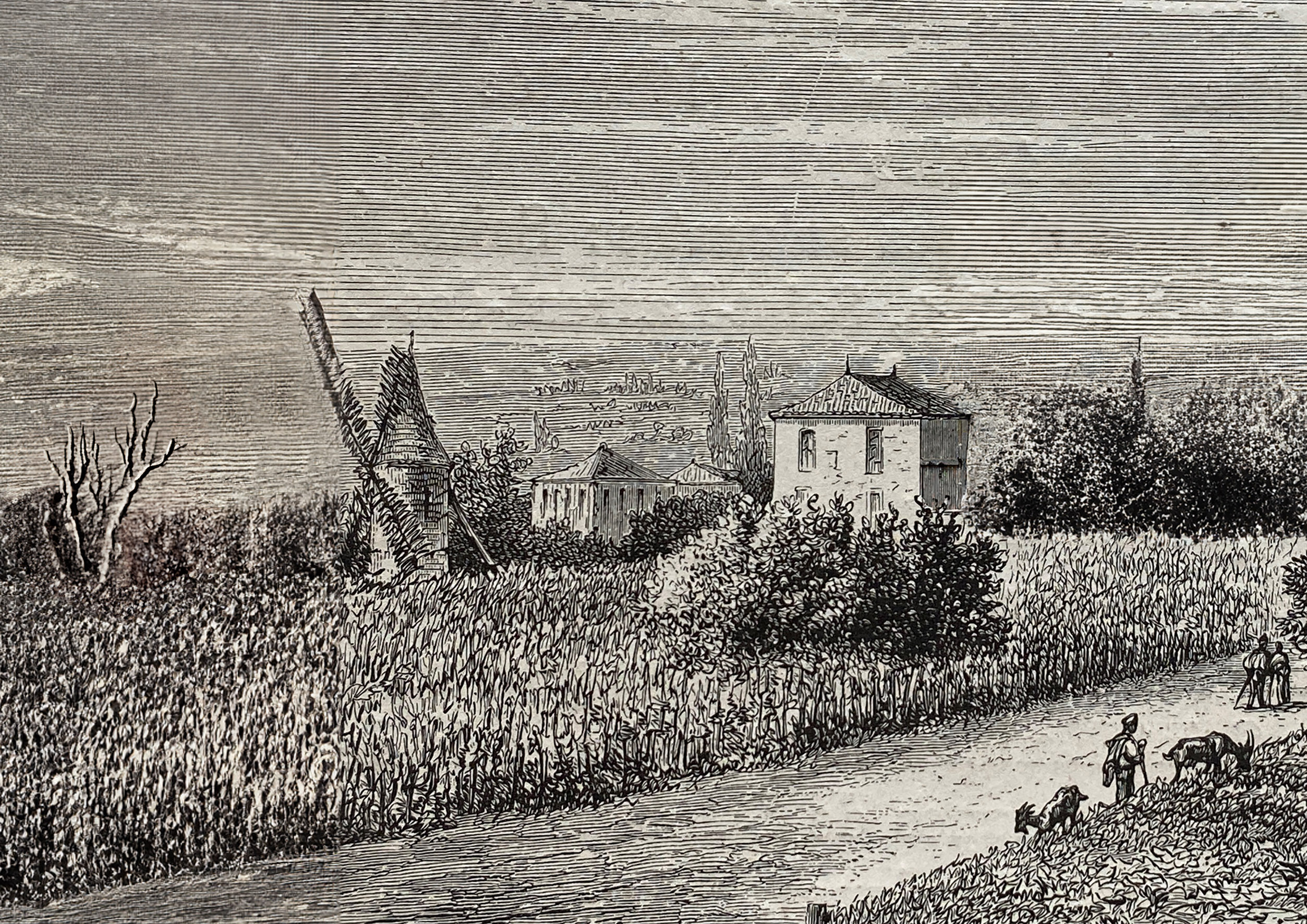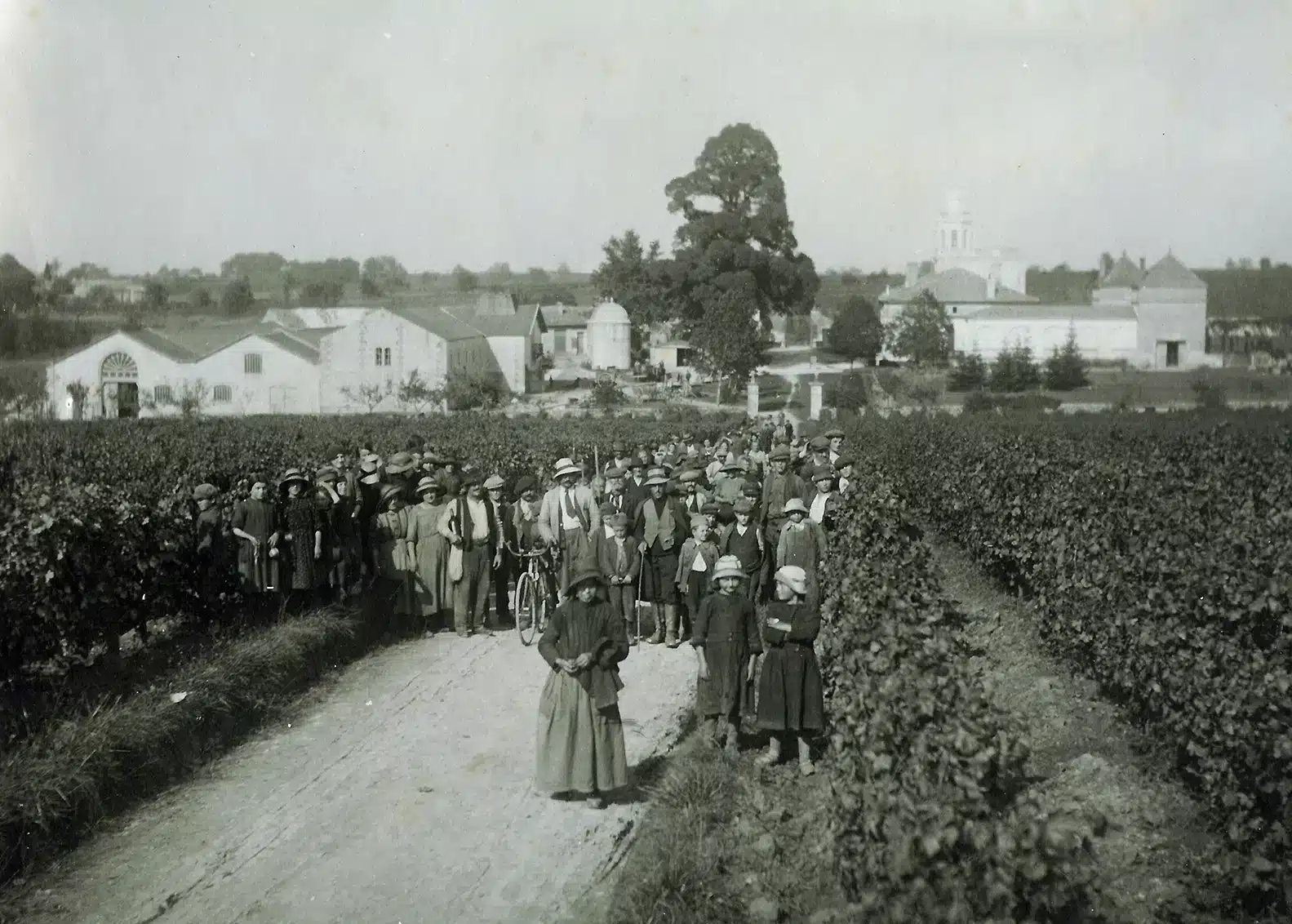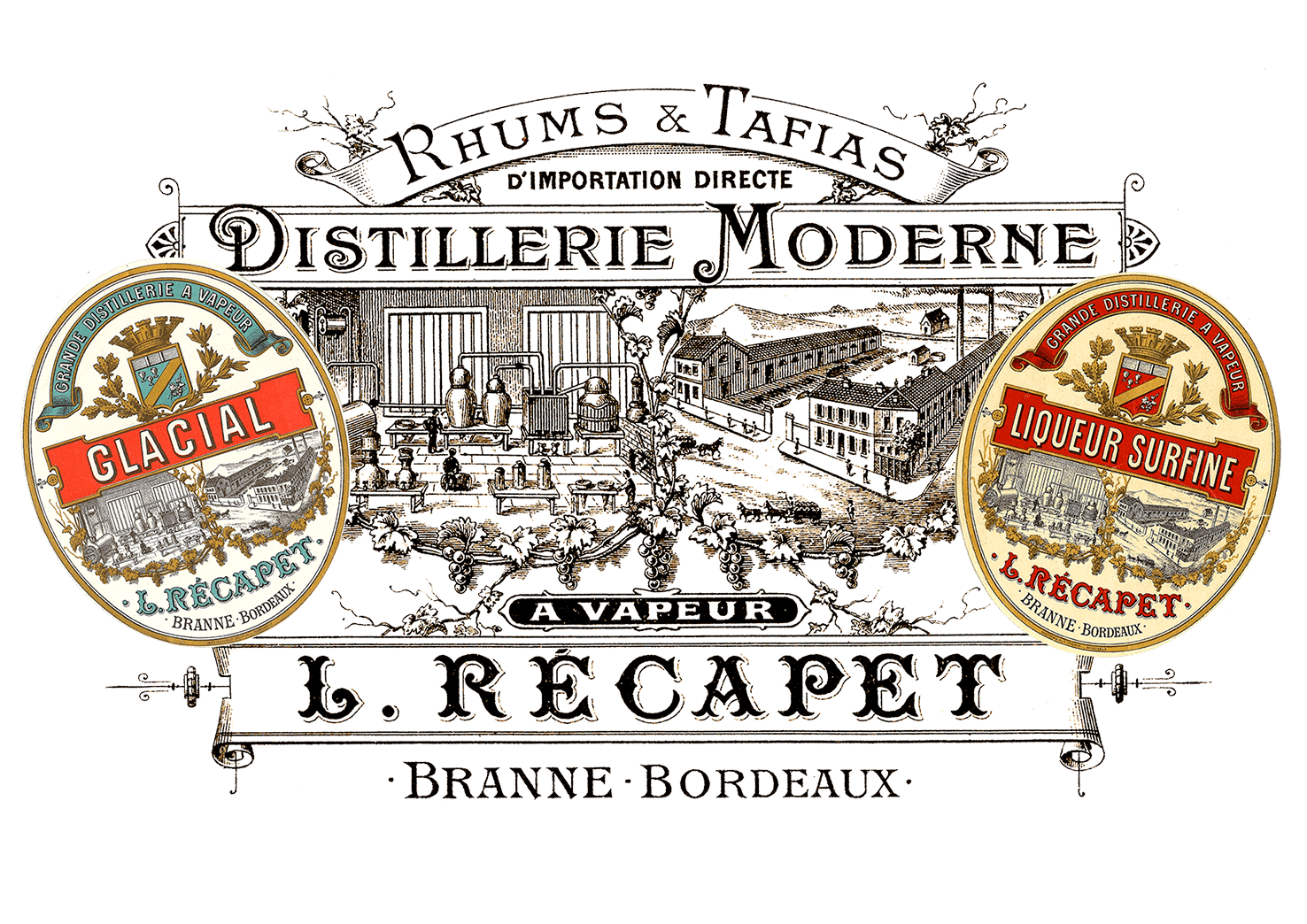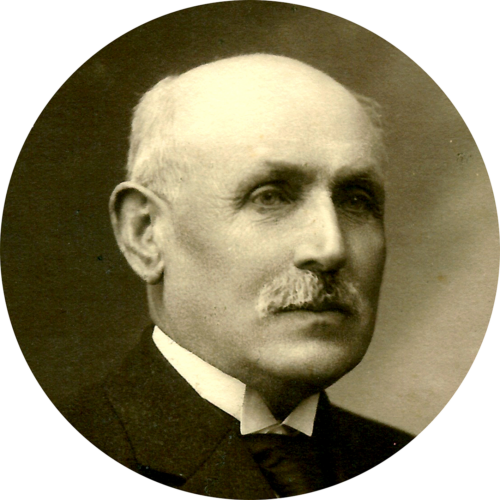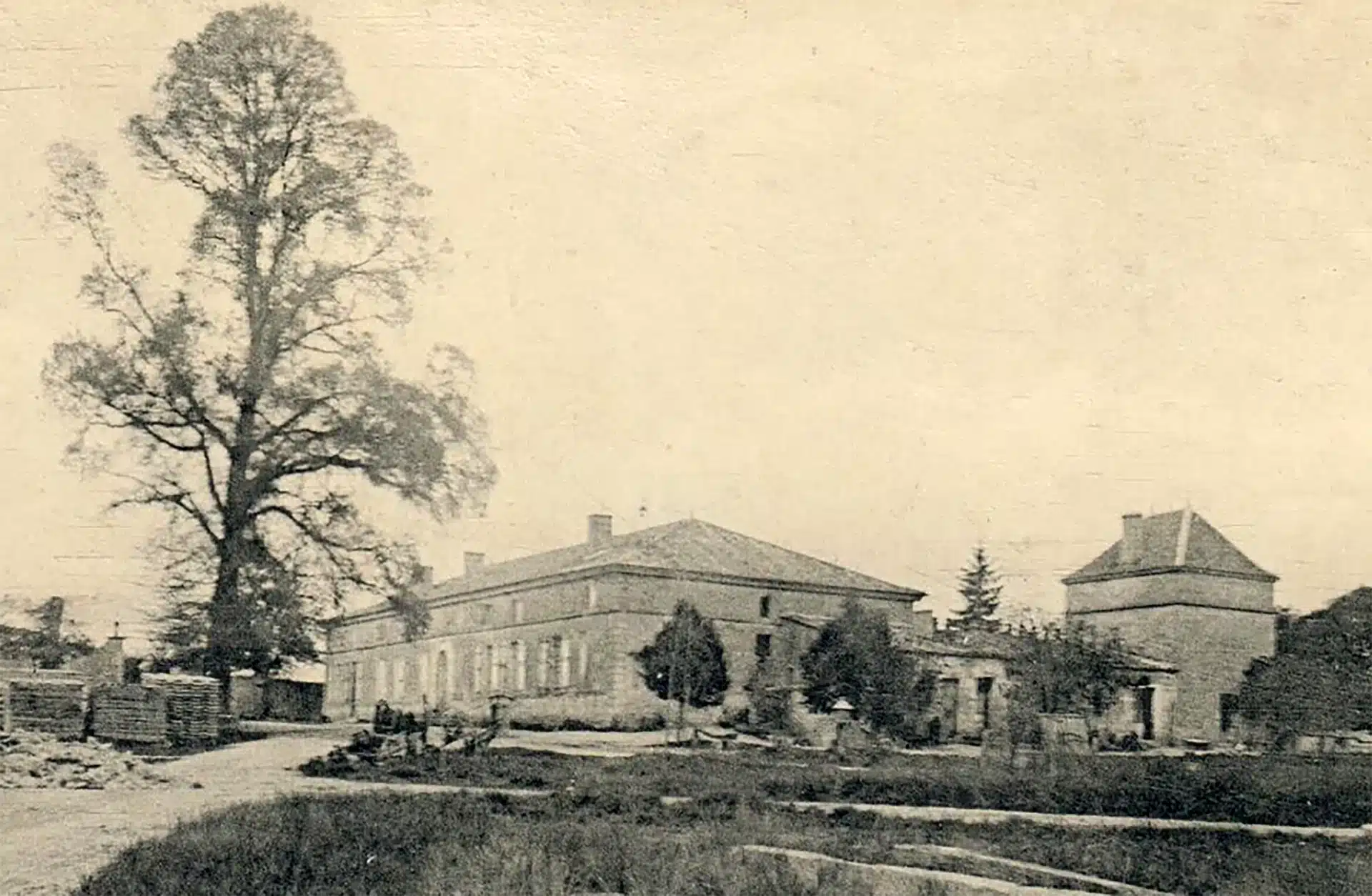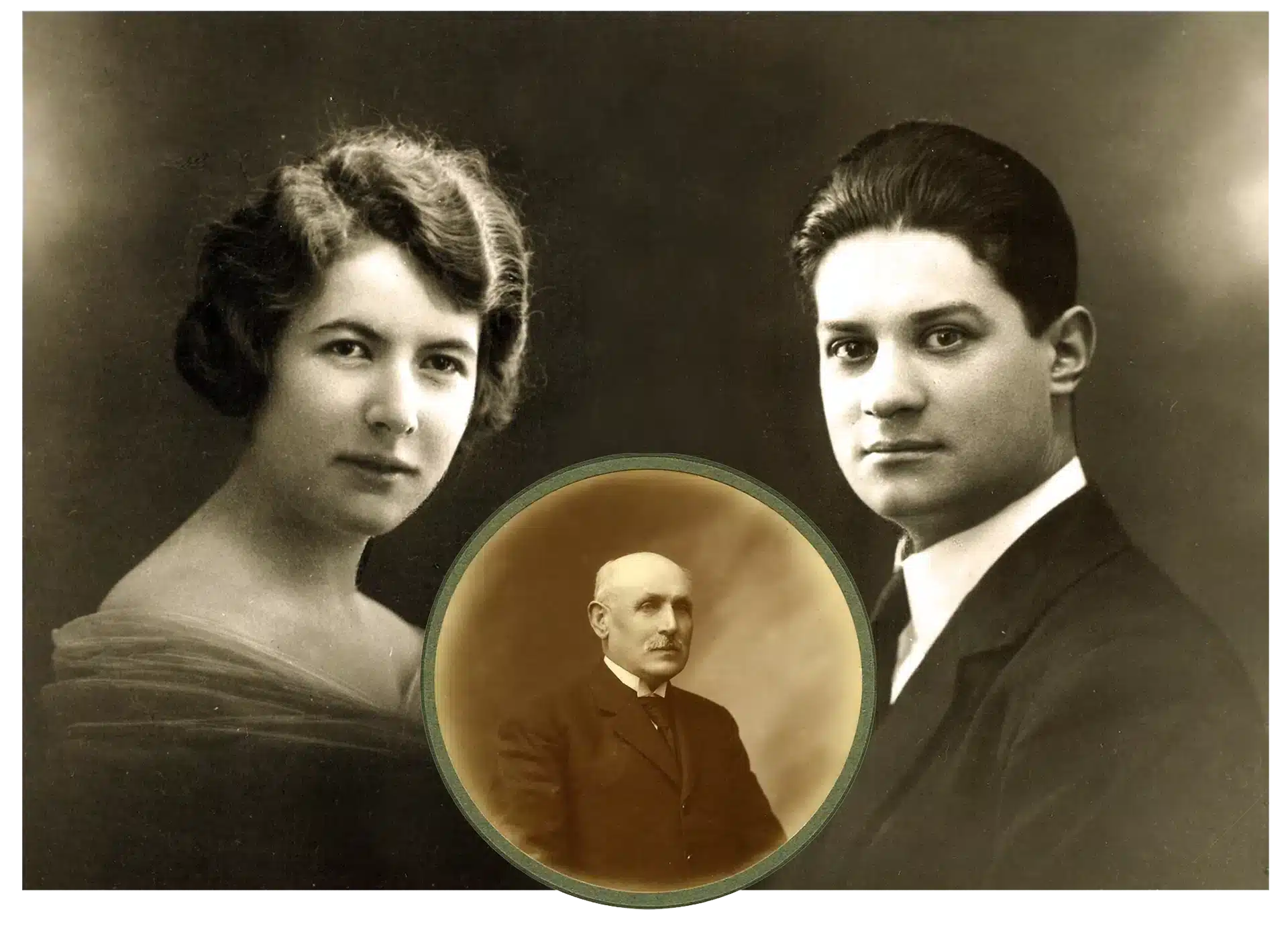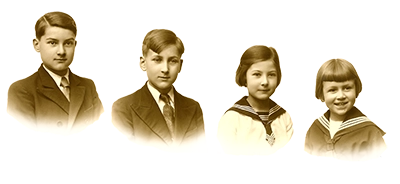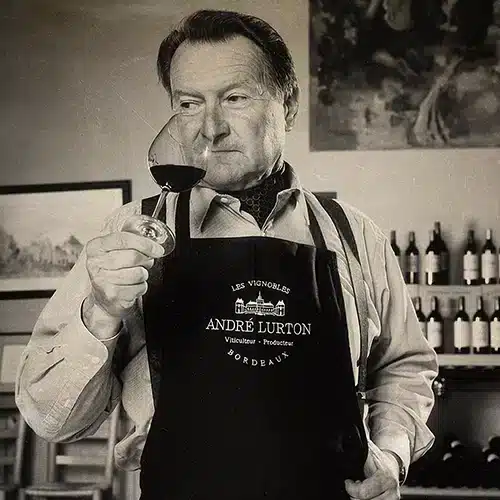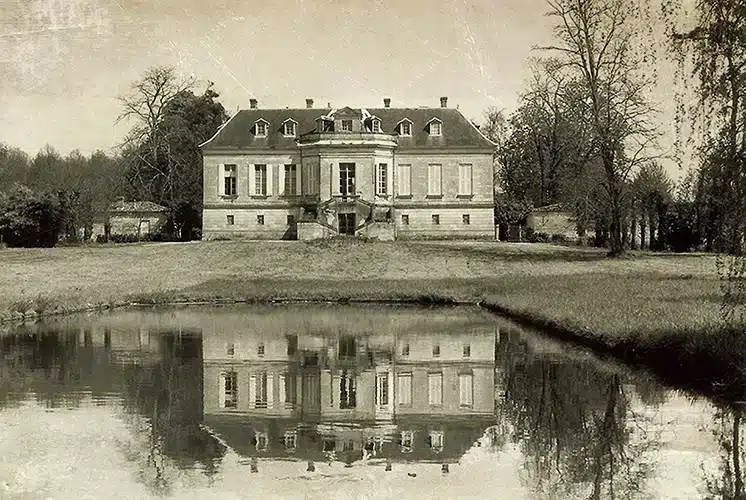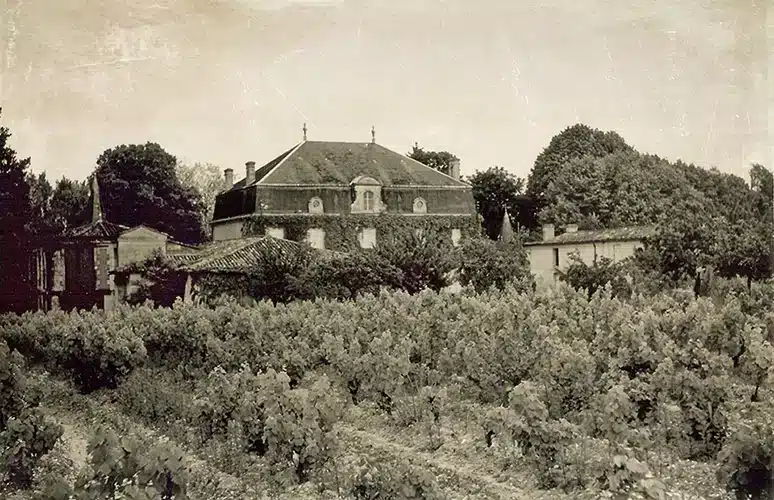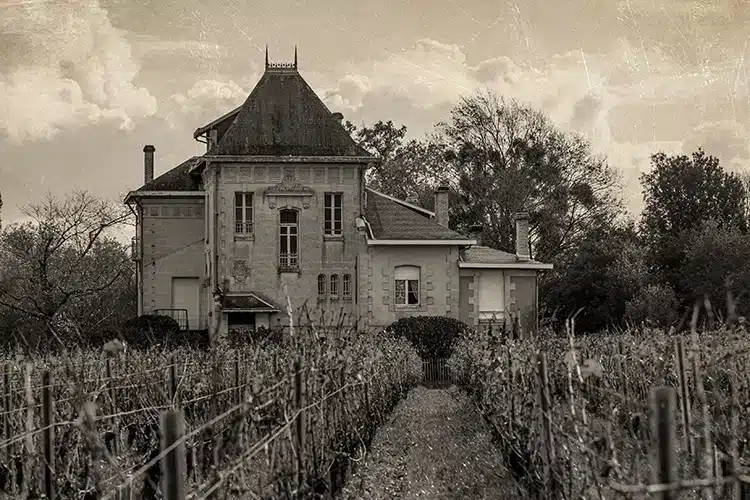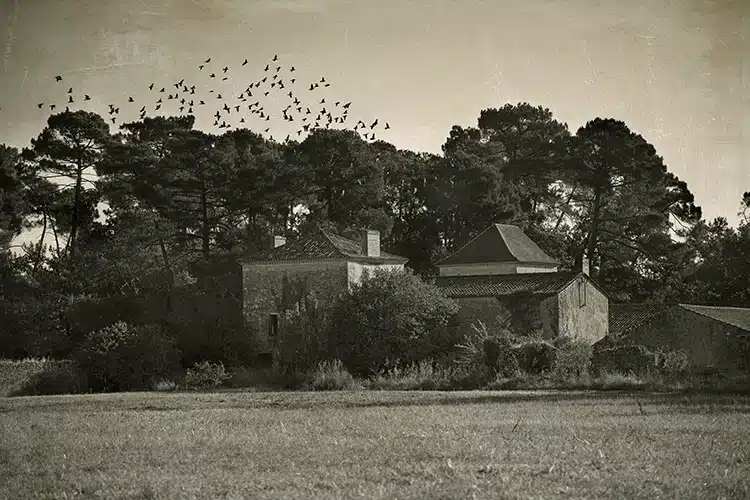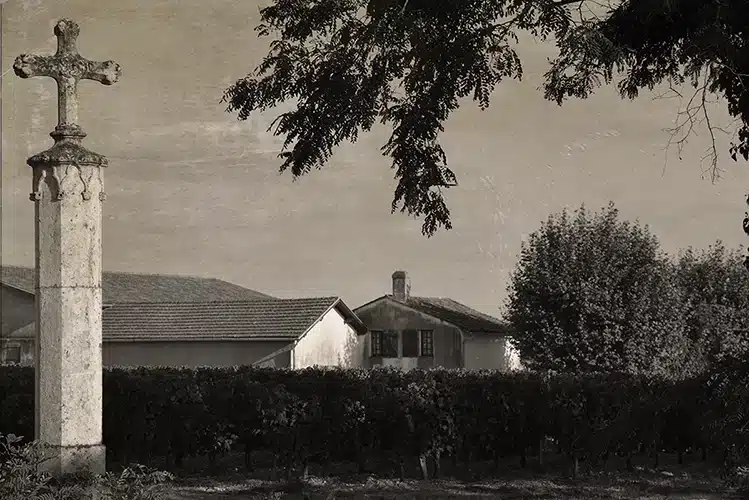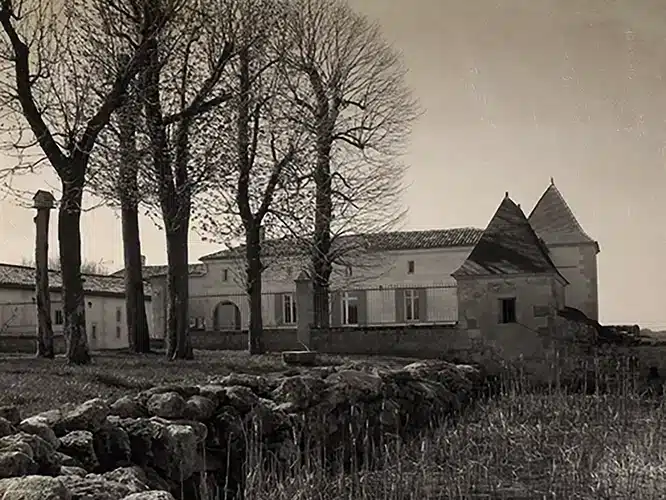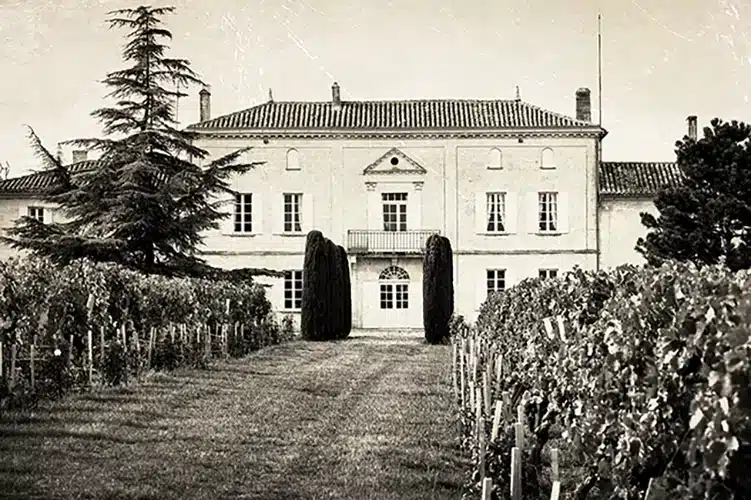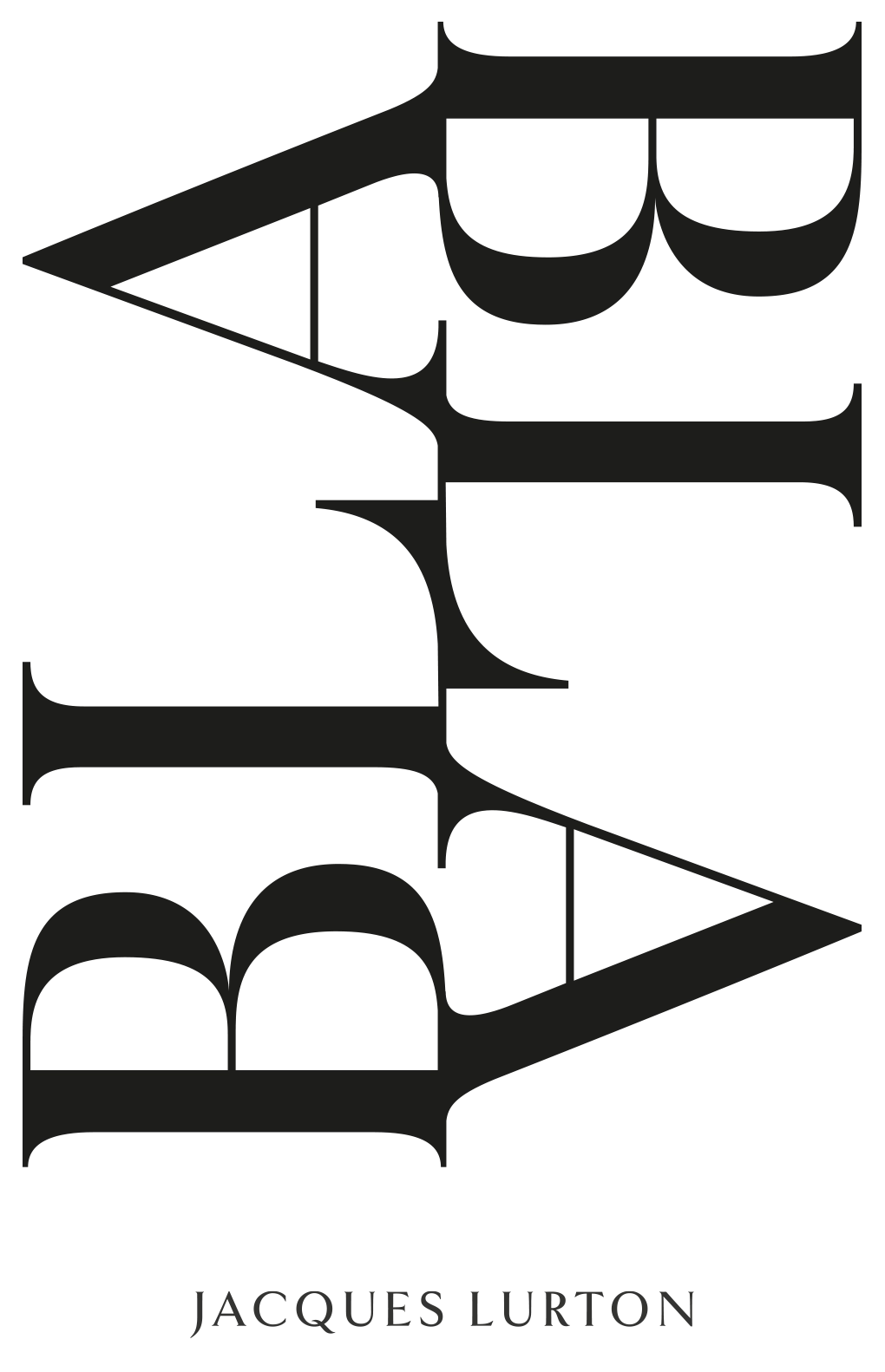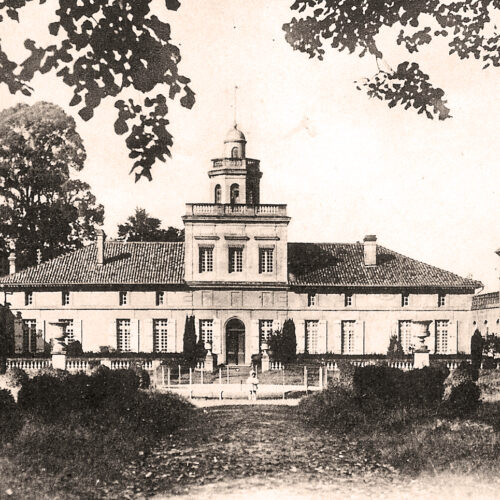
By 1897, the Bonnet property was in a state of disrepair, but that didn’t discourage our ancestor Léonce Récapet. On the contrary, he saw it as a challenge worthy of him. The Bonnet estate became a formidable experimental site for this avant-garde man: replanting of the vineyard, selection of the best grape varieties, construction of new cellars in 1902, in which the steam engine made harvesting easier. Léonce read widely, kept abreast of the latest growing and winemaking techniques, and put the best of them into practice. And he didn’t stop there: around 1915, he also became an architect, building the tower that still dominates the château today.
Three children were born of his union with Emma Thibeaud: Marie (who died in infancy), André and Denise.
André, our great-uncle, on whom his father’s hopes rested, was sent to complete his education at the Institut Agricole International de Beauvais, which was training the best agricultural executives at the time. Fresh out of school, with his agricultural engineering diploma in his pocket, and with war against Germany only just declared, the young man was called up for military service. In the spring of 1916, he died in Verdun under enemy bombardment, putting an end to a promising future.
